I can’t quite put my finger on it, but food has always occupied a rather idealized place both in our imaginations and memory. Whether it conjures the nostalgia of the dining table, flanked by family on Sunday evenings, restaurant hangs with friends, or the swirling euphoria of candle-lit tables for two, tucked in the corner of some restaurant –the name of which you’ve long forgotten, food, in much the same manner that it fills the belly happens to do just the same for the soul. It is certainly this distinct brand of nostalgia that South Korean credit card giant, Hyundai Card, aimed to evoke with a building they call their Cooking Library.
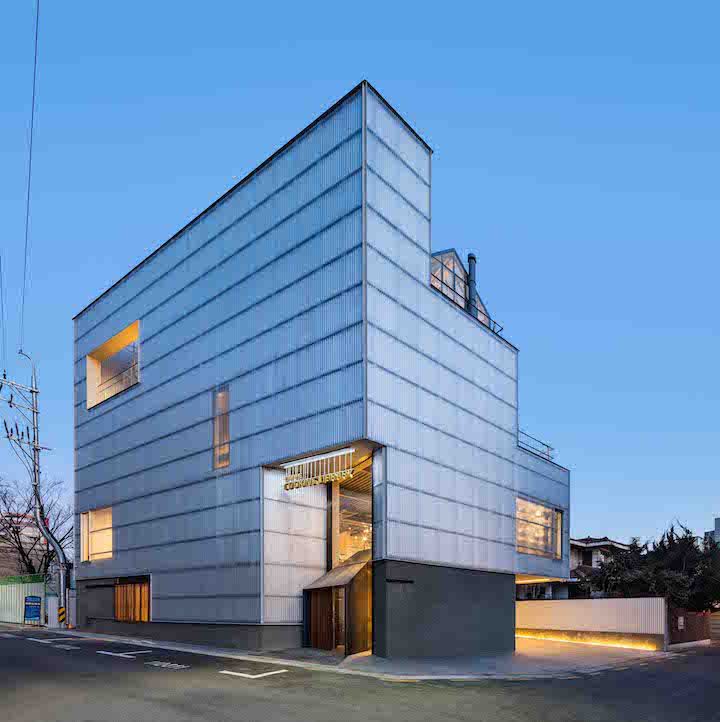
Situated in the affluent Yeoungdeungp-gu district of Seoul, the library is a foodie cathedral to all things analogue, its spaces custom-tailored to reinvigorate memories of a time when the world was that bit more curious, searching, and one that moved to an analogue beat. The Cooking Library is the fourth and, perhaps, most ambitious instalment in a series of buildings that Hyundai Card have recently commissioned. Each building is inspired by and captures a different aspect of life as a central motif, with each fashioned as museum-cum-leisure centres to travel, music, design, and-of course- cooking, respectively.
 Behind the wheel of the operation for the Cooking Library were London food and beverage design firm, Blacksheep, chosen by Hyundai Card to compose the Cooking Library’s interior spaces. Working closely with Choi Wook of One O One Architects, the pair were tasked with materialising the ambitious prose of the design brief into stone, metal and glass. Standing as though suspended in mid-air, the Cooking Library’s sharp angularities and thought-provoking forms convey both a boyish confidence and gorgeous eccentricity. Its palatial glass and steel exterior, whilst undoubtedly speaking the language of luxury and sophistication, breaks from the architectural vernacular of its locality. For even the most conservatively minded, it draws you in with new shapes and hidden geometries making themselves known the more you study it. Certainly, if your sense of intrigue invites you to step in- you most certainly will not be disappointed.
Behind the wheel of the operation for the Cooking Library were London food and beverage design firm, Blacksheep, chosen by Hyundai Card to compose the Cooking Library’s interior spaces. Working closely with Choi Wook of One O One Architects, the pair were tasked with materialising the ambitious prose of the design brief into stone, metal and glass. Standing as though suspended in mid-air, the Cooking Library’s sharp angularities and thought-provoking forms convey both a boyish confidence and gorgeous eccentricity. Its palatial glass and steel exterior, whilst undoubtedly speaking the language of luxury and sophistication, breaks from the architectural vernacular of its locality. For even the most conservatively minded, it draws you in with new shapes and hidden geometries making themselves known the more you study it. Certainly, if your sense of intrigue invites you to step in- you most certainly will not be disappointed.
We take a tour of Hyundai Card’s Cooking Library’s five, thematically tied floors- whilst navigating this multiverse of all things food, to see Blacksheep’s masterful blending of style, texture, tone, and form to bring the Hyundai Card’s abstract wishes for the space into beautifully concrete reality.
The Ground, Up
The Cooking library experience begins from the very moment you enter the building. On entering visitors undergo a cleanse ritual, delivered through a traditional, cast iron water hand pump and cast concrete bowl, all this set on a brass plinth. Like all things in the Cooking Library, there is a method to this. Texturally mirroring the brass plinth, lettering in solid brass poetically tell of ancient wisdoms:
‘Through water came life, through life came love.’
Cleansed and inspired, you’ll soon find yourself within striking distance of the café, bakery, deli and shop, all located on the ground floor. This area is open to both Hyundai Card members and the general public, offering an intoxicating first taste of the architectural feast to unfold. Blacksheep fashion much of the open-planned ground floor as a sophisticated and upmarket reimagining of a provincial, turn of the century European factory. True to this ethos, it is a hive of activity wherein guests immerse themselves in the space’s interactive and retail outlets. Certainly, so as to make the sale on this look whilst still retaining the Cooking Library’s luxurious stylings, Blacksheep had to distil foundational visual elements of the vintage factory, injecting these elements with a sense of play so as to retain their old-world character whilst still being modern and refreshing.
Certainly, these foundational elements came together to form a beautifully minimalist space. Like the factories of old, the ground floor does away with frills, on the contrary finding beauty in structural elements and the sheer utilitarian stylings of the space. The ceilings are particularly telling of this. Set high and lined with corrugated metal pattern, they act as a somewhat mimesis and tip of the hat to bygone industrial buildings. Suspended from this is a labyrinthine network of lighting fixtures, imported from Europe and a network of fans belonging to the building’s air conditioning system. These are confidently exposed to accentuate the space’s function, factory feel. The entire section is toned in dark grey and black hues, whilst, again, keeping with the thematic arc, also visually mute these elements so as to maintain an air of visual discretion. The basic, lattice-like geometry of the frames featured on the ceilings are similarly assimilated into feature walls- in doing so, marrying the space’s vertical and horizontal elements. The black, silhouette-like look of the metal work, designed so that it naturally patinas over time, elegantly contrasts the searching white-grey notes of the plaster walls. Blacksheep were equally meticulous regarding their selection of flooring. Locally sourced stone, styled in a herringbone pattern, stand in homage to the courtyard stylings of historic, European factories. This is gorgeously played against a polished concrete found as you work your way inwards- a tonal and textural counterpoint to the herringbone stonework whilst keeping within the stylistic parameters of all things old-school industrial.
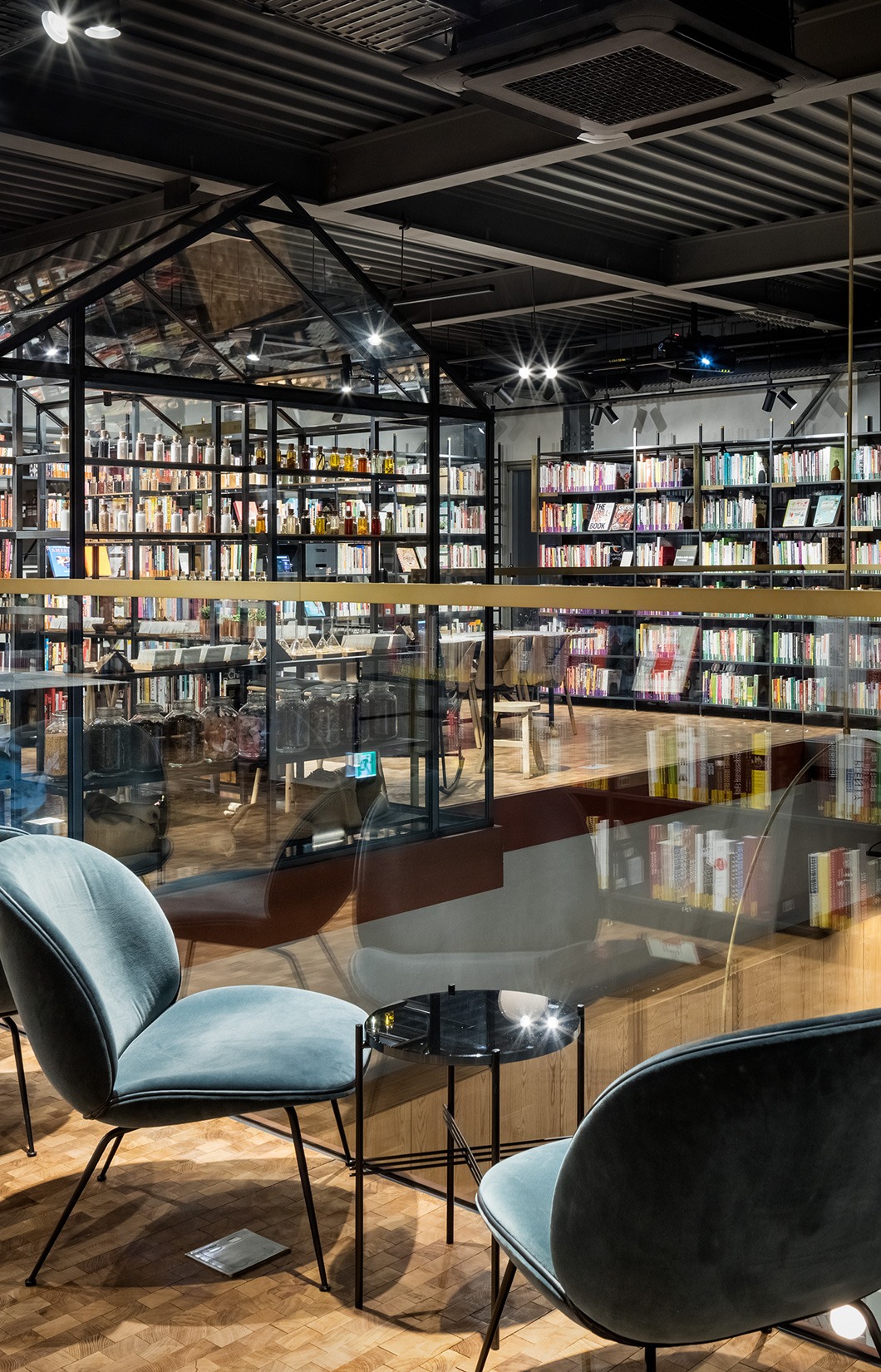
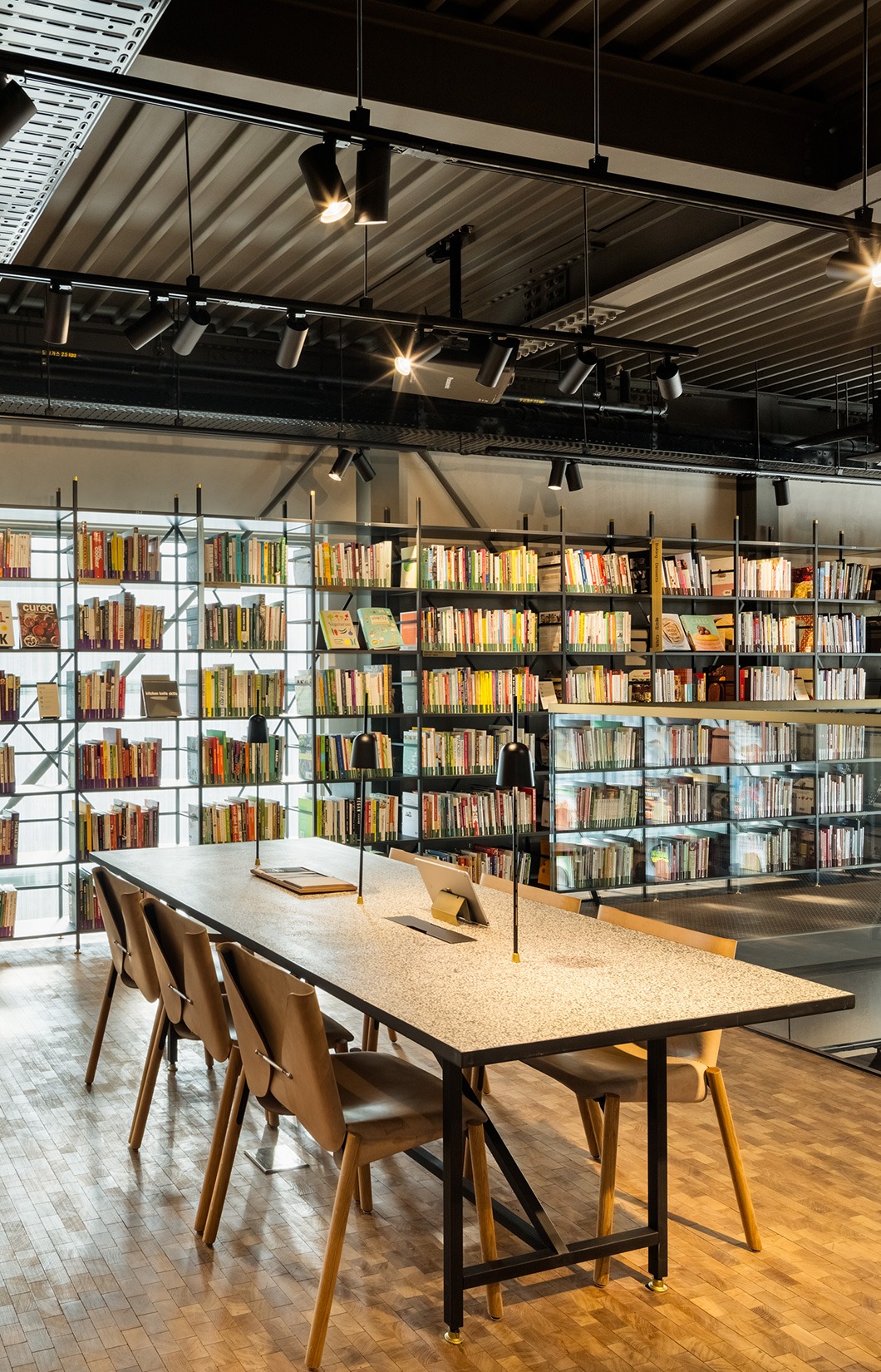
Though Blacksheep’s factory motif is somewhat rigidly adhered to in the space’s foundational touches, the ground floor is nevertheless boasts a seamless plurality of visual dialogues, drawing inspiration from across the globe as well as various time periods. Take the communal dining area, for example. A clean-cut, Calcutta marble counter is paired gorgeously with four Afteroom bar stools and a spherical, pendant light designed by Michael Anastassiades. United by a common inquiry into uncomplicated, rudimentary forms, they introduce a notably Scandinavian touch into the broader industrial rhetoric of the space. Around the corner, a large cast concrete dining table rests flanked by Mattiazi Solo chairs designed by Nitzan Cohen. Constructed from solid oak, they inject a certain rusticity to the cold, clinical metallic and stone touches that run through the space. Paired with a large print of the Dutch countryside, the wooden textures similarly provide an earthy, homelier feel to the space. Like the coffee bar, the dining table offers a similarly bold inquiry into form, sporting shapes that are playfully explorative, yet tasteful.
The bakery is a true feast for the senses. Blacksheep switch gears here a little with their juxtaposing of styles and forms, injecting a quirkiness and theatrical charm to the space. Herringbone tile and the splendid rusticity of the tables and workbenches on which elaborate displays of artisan breads are set, tell of the spaces notably Parisian influences. Blacksheep took special measures to personally source these items themselves. Set in extremely close proximity to the sharp geometries and stony textures of the coffee bar, the two styles dynamically clash and play against each other in all the right ways. Cylindrically formed, brass pendant lights by the Swedish brand Folc, match with the Corten bands, their radial arcs and golden-hued brass notes similarly play against the right-angles and monochromic greys of the space.
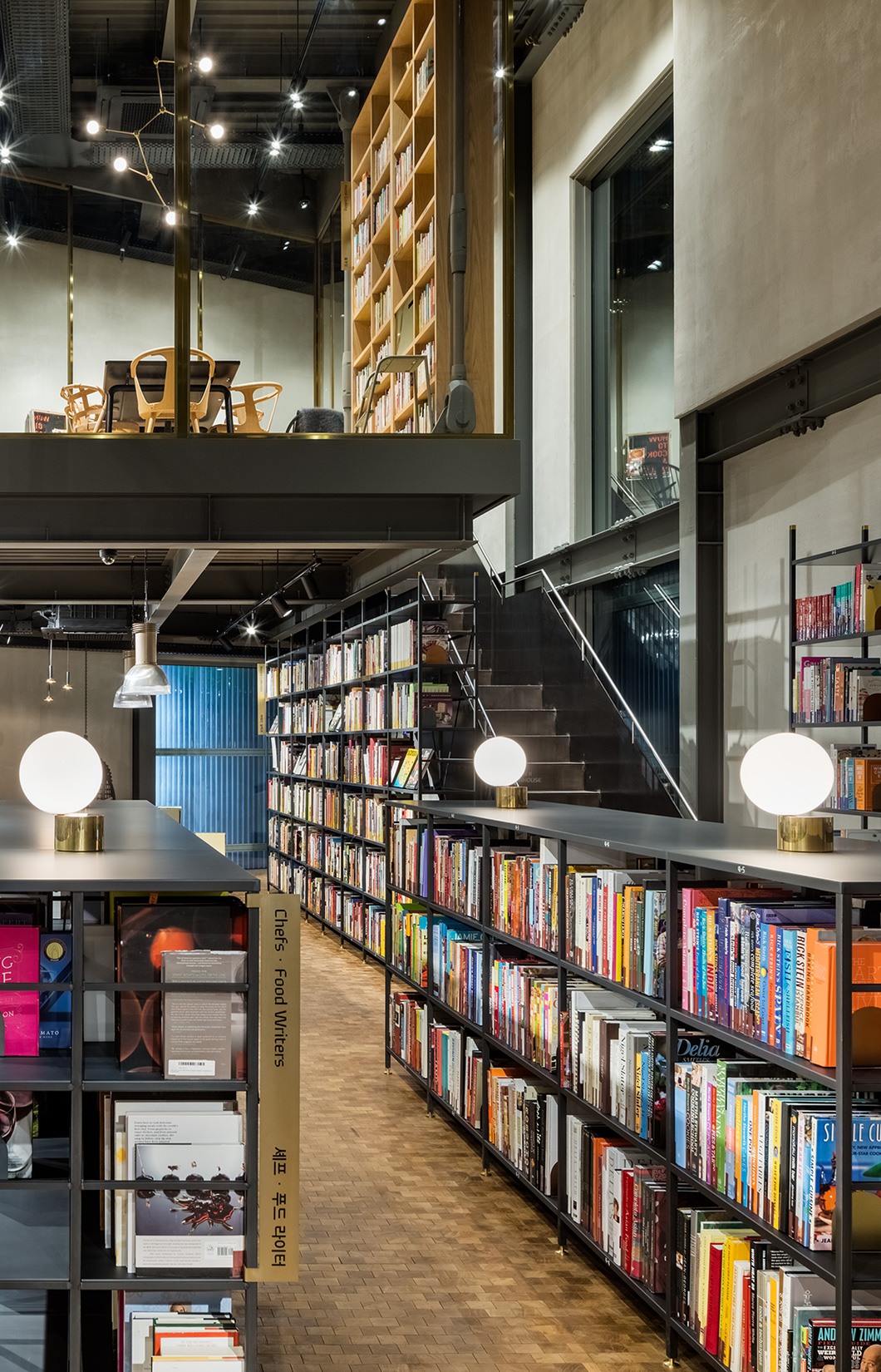 Innovation, by the book
Innovation, by the book
The library, located on the first floor of the building, is nothing short of an analogue playground. For the most part, it keeps to the vernacular established in the Cooking Library’s lower decks, working within the minimalist-industrial visual arc. Blacksheep nevertheless subtly shift elements to delineate that you are in a new domain. The floors are particularly striking. Blacksheep worked closely with British timber supplier Broadleaf to source the end-grain timber from which they achieved the striking, chessboard-like design; the pattern also reminiscent of a traditional butcher’s block. Against this, skeletal shelves, coolly industrial with their blackened steel forms, configure the space into a dizzying network of lanes. This space is home to approximately ten thousand titles, selected by Hyundai Card so as to cover all there is to know about all things food. Running somewhat parallel to the shelves, lanes of modular lights, similarly finished in a cool black, train light to catch the books from an array of angles, heightening the space’ sense of drama and dynamics.
 Study desks offer periodic, visual breaks from the labyrinthine cartographies established by the shelves – and- somewhat unsurprisingly by now, these too have been meticulously curated by Blacksheep for the space. The desks, made to bespoke specifications in Korea, all sport Terrazzo tile tops. To source this, Blacksheep worked with Terrazzo tile specialist, Diespeker. Beside its apparent visual beauty, marbled and texturally laden with erratic veining, the Terrazzo offers a new element to the wood and steel vernacular of the library, giving the whole space a roundedness in its elemental feel. Gorgeously foiling these are ‘Tip of the Touch’ lamps by Michael Anastassiades, the elegantly simply, black silhouettes of which make for a beautiful counterpoint. They also pair with the lighting fixtures suspended from the ceiling, adding to visual cohesion in Blacksheep’s composition of the library. Dotted around these study desks are striking Kristalia 1087 hide and wood chairs, imported from Italy. Their tan, leathery notes marry with the natural stain of the woods, whilst similarly serving as a somewhat reference to an old-world library visual in one that is defiantly contemporary. Certainly, if you’re after a more casual reading experience, Blacksheep similarly incorporated a Gubi Beetle lounge chair and side table that overlooks the mezzanine.
Study desks offer periodic, visual breaks from the labyrinthine cartographies established by the shelves – and- somewhat unsurprisingly by now, these too have been meticulously curated by Blacksheep for the space. The desks, made to bespoke specifications in Korea, all sport Terrazzo tile tops. To source this, Blacksheep worked with Terrazzo tile specialist, Diespeker. Beside its apparent visual beauty, marbled and texturally laden with erratic veining, the Terrazzo offers a new element to the wood and steel vernacular of the library, giving the whole space a roundedness in its elemental feel. Gorgeously foiling these are ‘Tip of the Touch’ lamps by Michael Anastassiades, the elegantly simply, black silhouettes of which make for a beautiful counterpoint. They also pair with the lighting fixtures suspended from the ceiling, adding to visual cohesion in Blacksheep’s composition of the library. Dotted around these study desks are striking Kristalia 1087 hide and wood chairs, imported from Italy. Their tan, leathery notes marry with the natural stain of the woods, whilst similarly serving as a somewhat reference to an old-world library visual in one that is defiantly contemporary. Certainly, if you’re after a more casual reading experience, Blacksheep similarly incorporated a Gubi Beetle lounge chair and side table that overlooks the mezzanine.
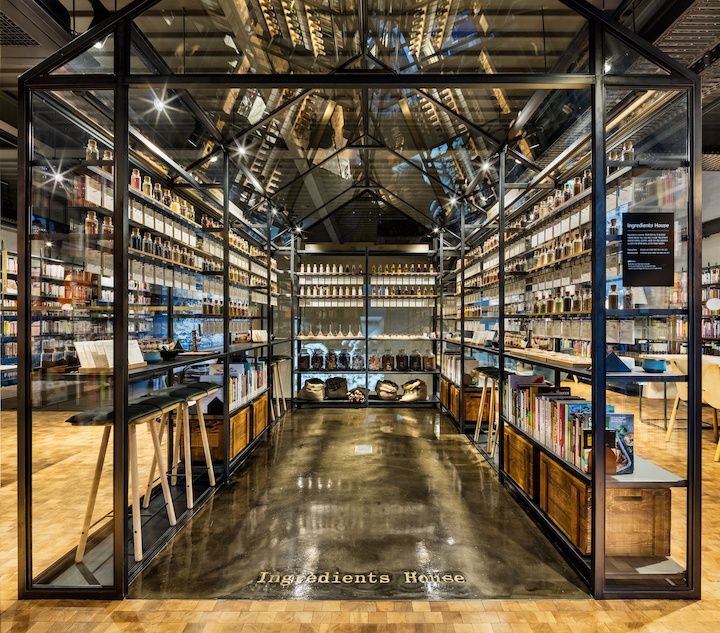 The first floor is also home to the Cooking Library’s Ingredients House, a glass and metal structure that mimics the form of house wherein hundreds of ingredients from around the world, such as rice bran oil, annatto and myrtle, are gorgeously curated and displayed. This is a space lost in time, and truly feels like -part something lifted out of a Dickensian novel, part historic market lifted from a nether-corner of the world. This said, Blacksheep, and One O One Architects, who collaborated on this, were careful to not fashion it a visual anachronism. The minimalist frame of the Ingredients house, finished in blackened steel with brass detailing, follows the visual cues of the shelving units marrying it with the broad visual carried over much of the first floor. The Ingredients house is a space that invites visitors to satiate their own sense of inquiry and curiosity into the alchemy of food. A set of Solid Oak, Skagerak George stools, complete with olive seat pads, invite them to take their time in doing so, at the same time, quoting the truly global references points that have come together to fashion this bewilderingly curious, emporium-like space.
The first floor is also home to the Cooking Library’s Ingredients House, a glass and metal structure that mimics the form of house wherein hundreds of ingredients from around the world, such as rice bran oil, annatto and myrtle, are gorgeously curated and displayed. This is a space lost in time, and truly feels like -part something lifted out of a Dickensian novel, part historic market lifted from a nether-corner of the world. This said, Blacksheep, and One O One Architects, who collaborated on this, were careful to not fashion it a visual anachronism. The minimalist frame of the Ingredients house, finished in blackened steel with brass detailing, follows the visual cues of the shelving units marrying it with the broad visual carried over much of the first floor. The Ingredients house is a space that invites visitors to satiate their own sense of inquiry and curiosity into the alchemy of food. A set of Solid Oak, Skagerak George stools, complete with olive seat pads, invite them to take their time in doing so, at the same time, quoting the truly global references points that have come together to fashion this bewilderingly curious, emporium-like space.
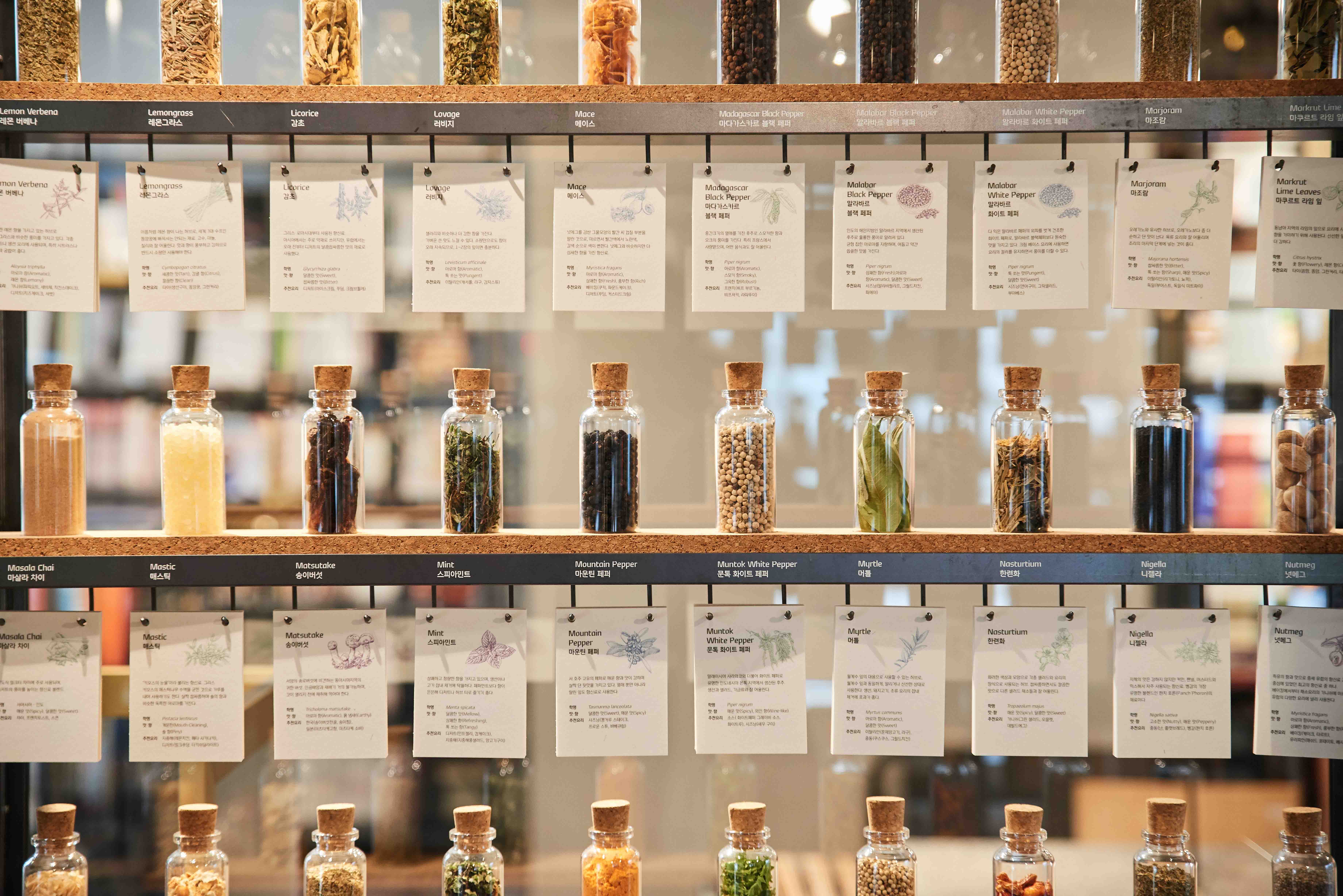 At the Heart
At the Heart
The old cliché goes that, at the heart of every home, is the kitchen- and certainly, with a name like the Cooking Library, this holds true here also. More than a cliché however, the third-floor kitchen of Hyundai Card’s Cooking Library is a wholly dynamic space. Seminars and book signings by the industry’s who’s who can be conducted here, where guests can also dabble in and out of the Recipe Room to collaborate, share, and practise their love for cooking. With so much happening, there were naturally logistical demands as to the functionality of the kitchen that Blacksheep had to address. Paired with a bold visual style manifesto- this is a balance that, we believe, they’ve struck with tremendous grace.
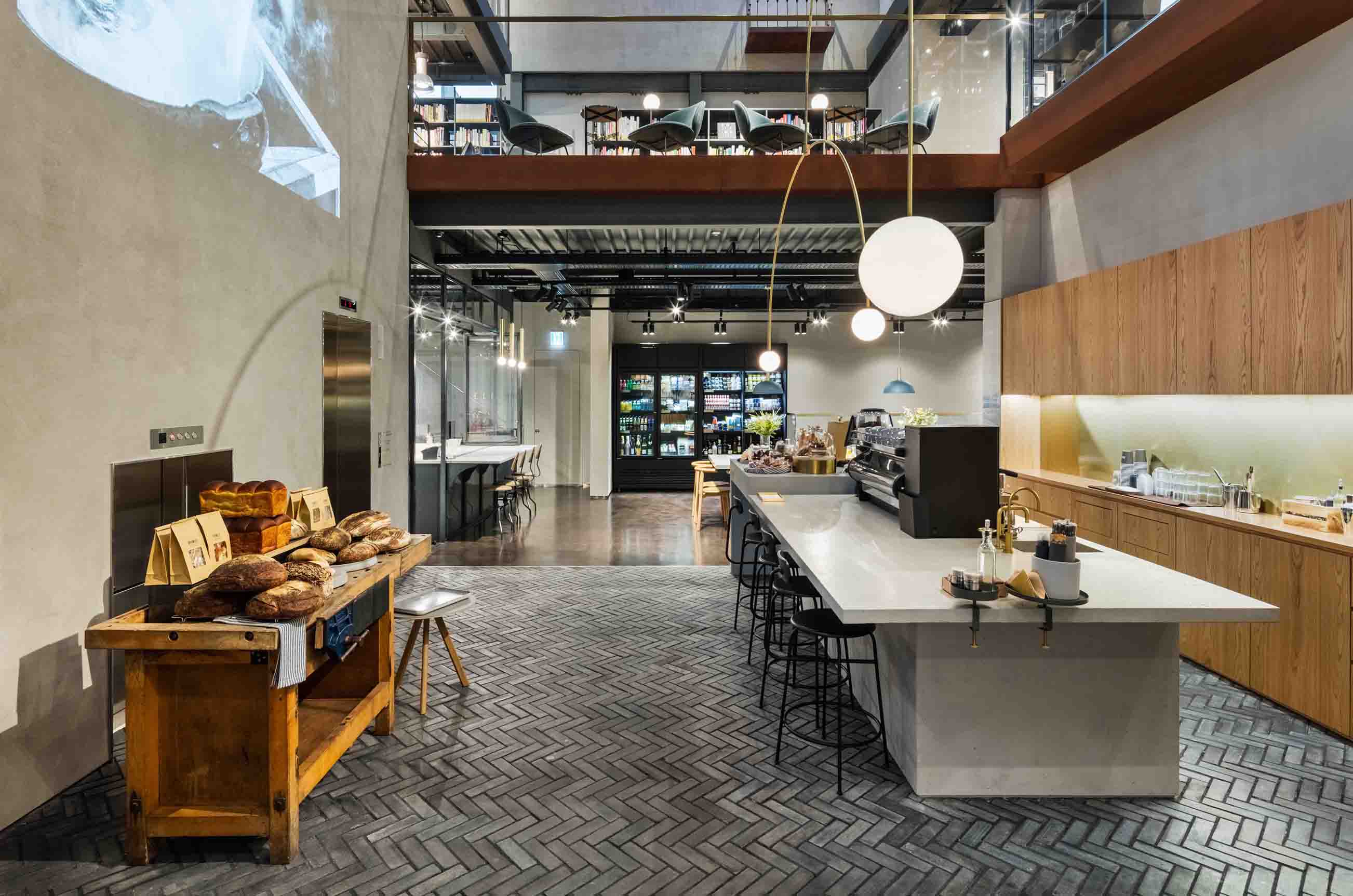 Whilst part-industrial in its interior choices, Blacksheep fashioned the kitchen as pretty much its own beast. Like the rest of Hyundai Card’s Cooking Library, it retains the sharp angularities and clean, simple forms of typical of the building’s minimalist-industrial stylings. Blacksheep’s emphasis on exposed metallic elements, observed in the kitchen’s various fixtures by the Watermark Collection, in addition to more decorative elements that vein its walls, also establishes a visual continuity with the rest of the building. However, a resin floor, sporting both gloss and patina in places, replaces the wooden and concrete rhetoric of the Cooking Library’s other domains, adding a more rough-around-the-edges bravado to offset the formal intricacy of the fittings. Marble countertops and bespoke, wooden cabinets also introduce naturalistic coordinates into an inherently steely place, coloured by a palette of monochromic tones.
Whilst part-industrial in its interior choices, Blacksheep fashioned the kitchen as pretty much its own beast. Like the rest of Hyundai Card’s Cooking Library, it retains the sharp angularities and clean, simple forms of typical of the building’s minimalist-industrial stylings. Blacksheep’s emphasis on exposed metallic elements, observed in the kitchen’s various fixtures by the Watermark Collection, in addition to more decorative elements that vein its walls, also establishes a visual continuity with the rest of the building. However, a resin floor, sporting both gloss and patina in places, replaces the wooden and concrete rhetoric of the Cooking Library’s other domains, adding a more rough-around-the-edges bravado to offset the formal intricacy of the fittings. Marble countertops and bespoke, wooden cabinets also introduce naturalistic coordinates into an inherently steely place, coloured by a palette of monochromic tones.
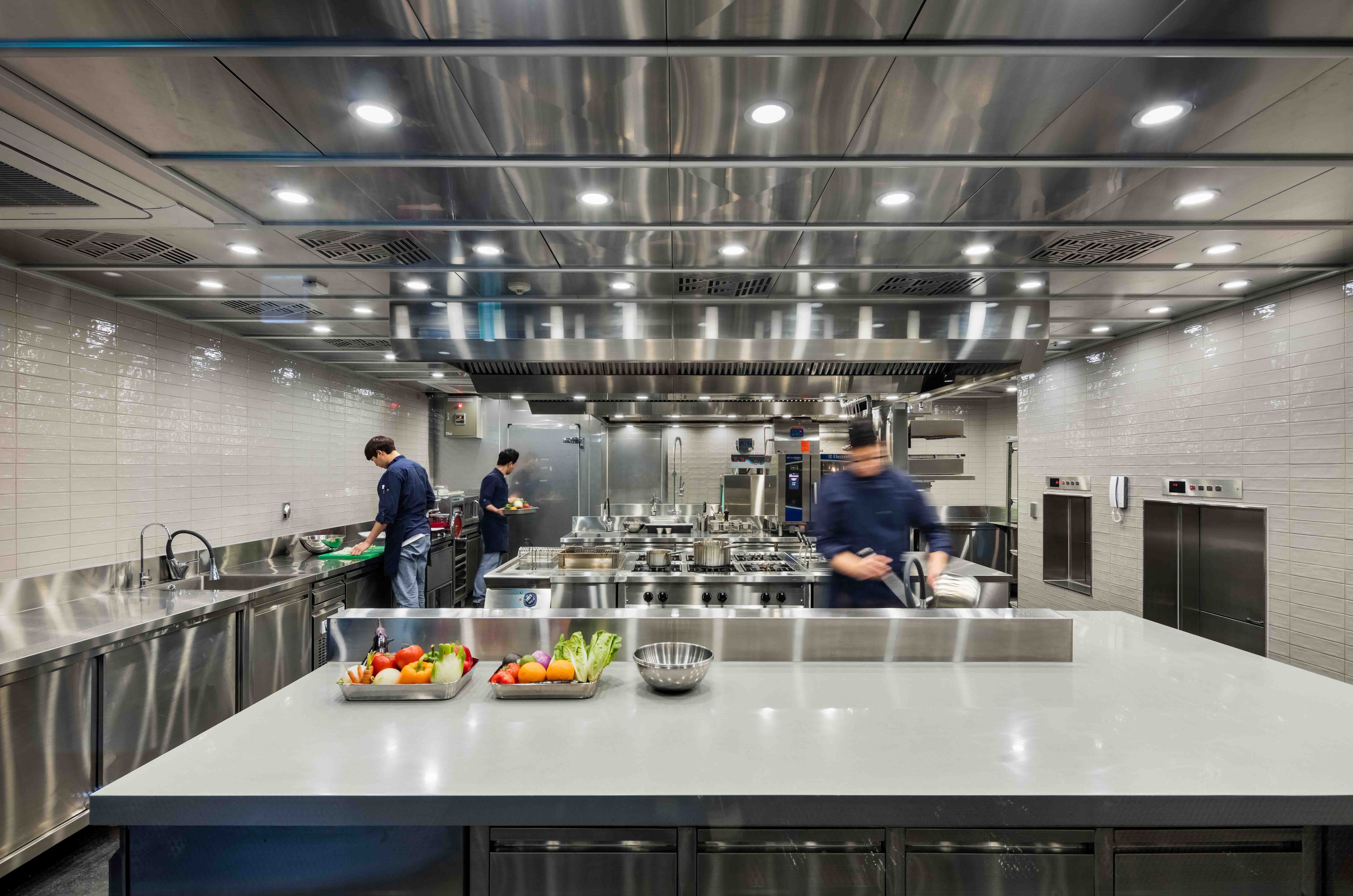 At arm’s length from the kitchen, Blacksheep fashion the Recipe Room as a somewhat alter-ego. The Clark Kent to kitchen’s Superman. Certainly, where Blacksheep orientate the kitchen’s gaze towards a clinical, factory look, the Recipe Room is a homelier space, clad head-to-toe in wooden tones and warmer, welcoming hues. Blacksheep’s work with the flooring is particularly gorgeous. Timber panels are aligned in a herringbone pattern, in much the same fashion stone tiles are on the ground floor. Whilst tying the Cooking Library’s various domains together, it drives a homely rusticity and uniqueness for the Recipe Room at the same time. The Solid Oak shelving operates in much the same way, formally resembling those located in the library, though fashioned as a wooden reimagining of their metal silhouettes. The Recipe Room’s notably domestic sensibilities are also reflected in the central, traditional raft table and sewn leather chairs by the Swedish brand Gemla. Keeping with warm tones and homely, tactile textures, these elements add to the room’s wholesome feel. Certainly, Blacksheep were able to further drive the Recipe Room’s domestic stylings by peppering the space with the paraphernalia of archetypal domestic kitchen; weighing scales and Max Lamb for 1882 basalt accessories are indeed, luxurious imaginations of this. The Recipe Room similarly observed a freer sense of play as to how the space was composed, something that Blacksheep were able to exploit to fantastic effect. A chief example is the Tribeca Harrison chandelier that hangs directly above the table. It’s playful, charming and beautifully eccentric; though it deviates somewhat from the industrial arc of the Cooking Library, it packs personality in spades.
At arm’s length from the kitchen, Blacksheep fashion the Recipe Room as a somewhat alter-ego. The Clark Kent to kitchen’s Superman. Certainly, where Blacksheep orientate the kitchen’s gaze towards a clinical, factory look, the Recipe Room is a homelier space, clad head-to-toe in wooden tones and warmer, welcoming hues. Blacksheep’s work with the flooring is particularly gorgeous. Timber panels are aligned in a herringbone pattern, in much the same fashion stone tiles are on the ground floor. Whilst tying the Cooking Library’s various domains together, it drives a homely rusticity and uniqueness for the Recipe Room at the same time. The Solid Oak shelving operates in much the same way, formally resembling those located in the library, though fashioned as a wooden reimagining of their metal silhouettes. The Recipe Room’s notably domestic sensibilities are also reflected in the central, traditional raft table and sewn leather chairs by the Swedish brand Gemla. Keeping with warm tones and homely, tactile textures, these elements add to the room’s wholesome feel. Certainly, Blacksheep were able to further drive the Recipe Room’s domestic stylings by peppering the space with the paraphernalia of archetypal domestic kitchen; weighing scales and Max Lamb for 1882 basalt accessories are indeed, luxurious imaginations of this. The Recipe Room similarly observed a freer sense of play as to how the space was composed, something that Blacksheep were able to exploit to fantastic effect. A chief example is the Tribeca Harrison chandelier that hangs directly above the table. It’s playful, charming and beautifully eccentric; though it deviates somewhat from the industrial arc of the Cooking Library, it packs personality in spades.
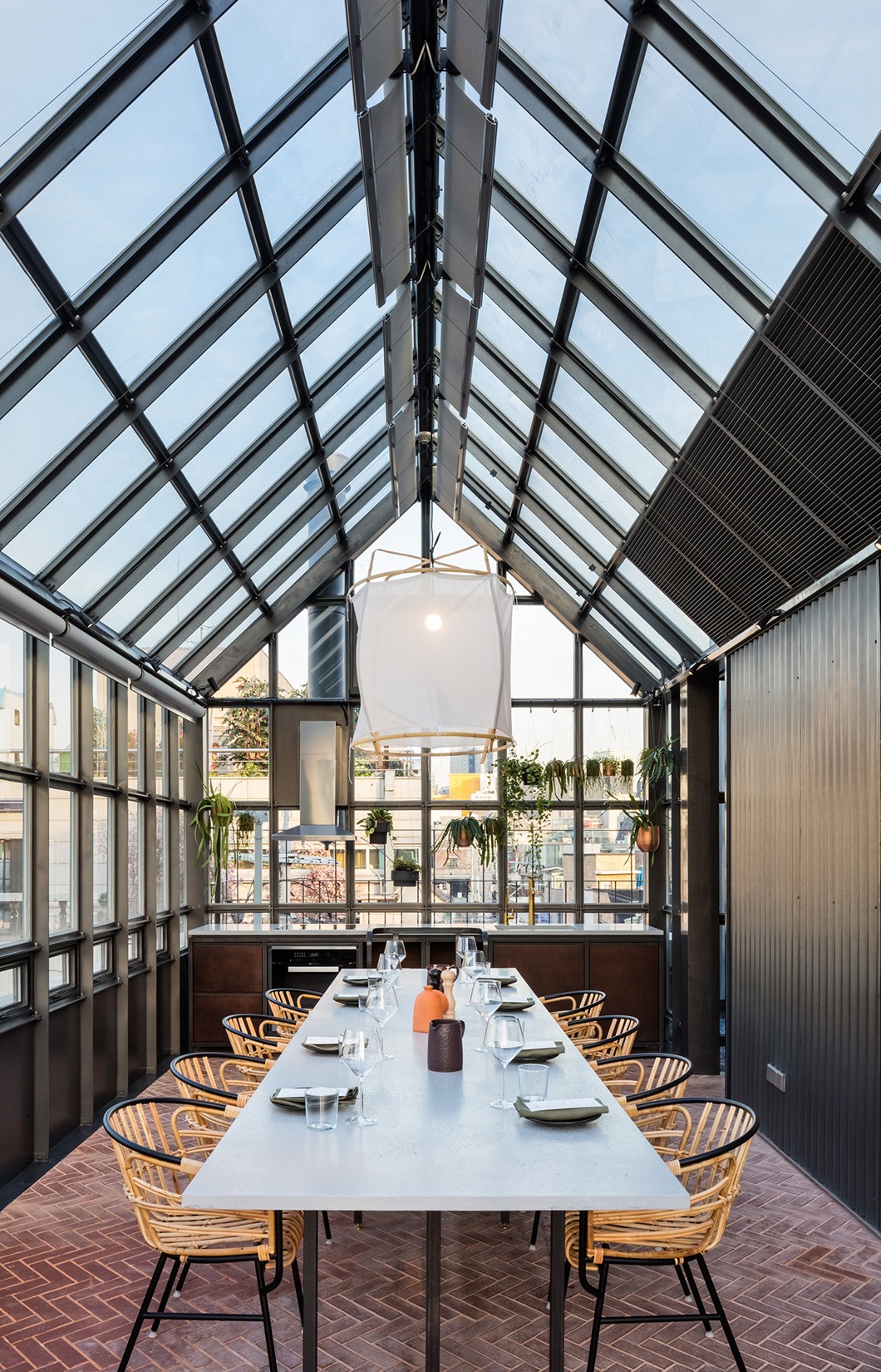 Whilst taking its inspiration from the humble garden shed, the Cooking Library’s Greenhouse is anything but. Glass-framed from canopy to walls, Blacksheep developed it to facilitate outdoor food culture in its full, uncompromised beauty. Vibrant terracotta paving is laid in a herringbone pattern, texturally quoting sun-baked Mediterranean influences. At the peak of its roof-like canopy, A 1700-millimetre dimeter linin feature pendant light injects a steely metropolitan sophistication to this otherwise, functionally pastoral space; with the concrete table, the two pair the Greenhouse with the interior discourses that run uniform across Hyundai Card’s Cooking Kitchen. Blacksheep’s goal with this space was to diffuse indoor and outdoor elements together, seamlessly serving as an outdoor extension to the Kitchen situated on the same floor; a pizza oven and outdoor barbeque certainly captures this move towards outdoor dining culture. Another of Blacksheep’s goals was that the Greenhouse served as a pastoral space, displaying the growing, life-generating aspects of food culture also. Reflecting this, adjacent allotments, and various sections with the greenhouse supply plants, herbs and vegetables to the kitchen, whilst other plants, such as orange trees also serve an ornamental, decorative function. The whole place is beautifully rustic, whilst elements of concrete and terrazzo arc it to the undeniable stylings of the Library.
Whilst taking its inspiration from the humble garden shed, the Cooking Library’s Greenhouse is anything but. Glass-framed from canopy to walls, Blacksheep developed it to facilitate outdoor food culture in its full, uncompromised beauty. Vibrant terracotta paving is laid in a herringbone pattern, texturally quoting sun-baked Mediterranean influences. At the peak of its roof-like canopy, A 1700-millimetre dimeter linin feature pendant light injects a steely metropolitan sophistication to this otherwise, functionally pastoral space; with the concrete table, the two pair the Greenhouse with the interior discourses that run uniform across Hyundai Card’s Cooking Kitchen. Blacksheep’s goal with this space was to diffuse indoor and outdoor elements together, seamlessly serving as an outdoor extension to the Kitchen situated on the same floor; a pizza oven and outdoor barbeque certainly captures this move towards outdoor dining culture. Another of Blacksheep’s goals was that the Greenhouse served as a pastoral space, displaying the growing, life-generating aspects of food culture also. Reflecting this, adjacent allotments, and various sections with the greenhouse supply plants, herbs and vegetables to the kitchen, whilst other plants, such as orange trees also serve an ornamental, decorative function. The whole place is beautifully rustic, whilst elements of concrete and terrazzo arc it to the undeniable stylings of the Library.
Lower Decks
Tucked away on the basement level lies the Hyundai Card Cooking Library’s subterranean powerhouse- a professional kitchen that is every part the one you’d find in many prestigious restaurants. High tech yet timeless, the whole room is encased in Crittle reeded glass panels. White tiles, sourced from the British tile suppler, Gestec, pays a homage to the archetypal French kitchen, packing a metropolitan edge with the look’s subway references also. The motif of antiqued metals is nevertheless present; adding an historic depth to balance this space’s unapologetic modern look whilst, again, marrying the kitchen with the rest of Hyundai Card’s visual arc. The kitchen’s underground location makes it a perfect place for the storage of wines, for which Blacksheep embedded oversized displays to the rear wall of the storeroom, encased within the space.
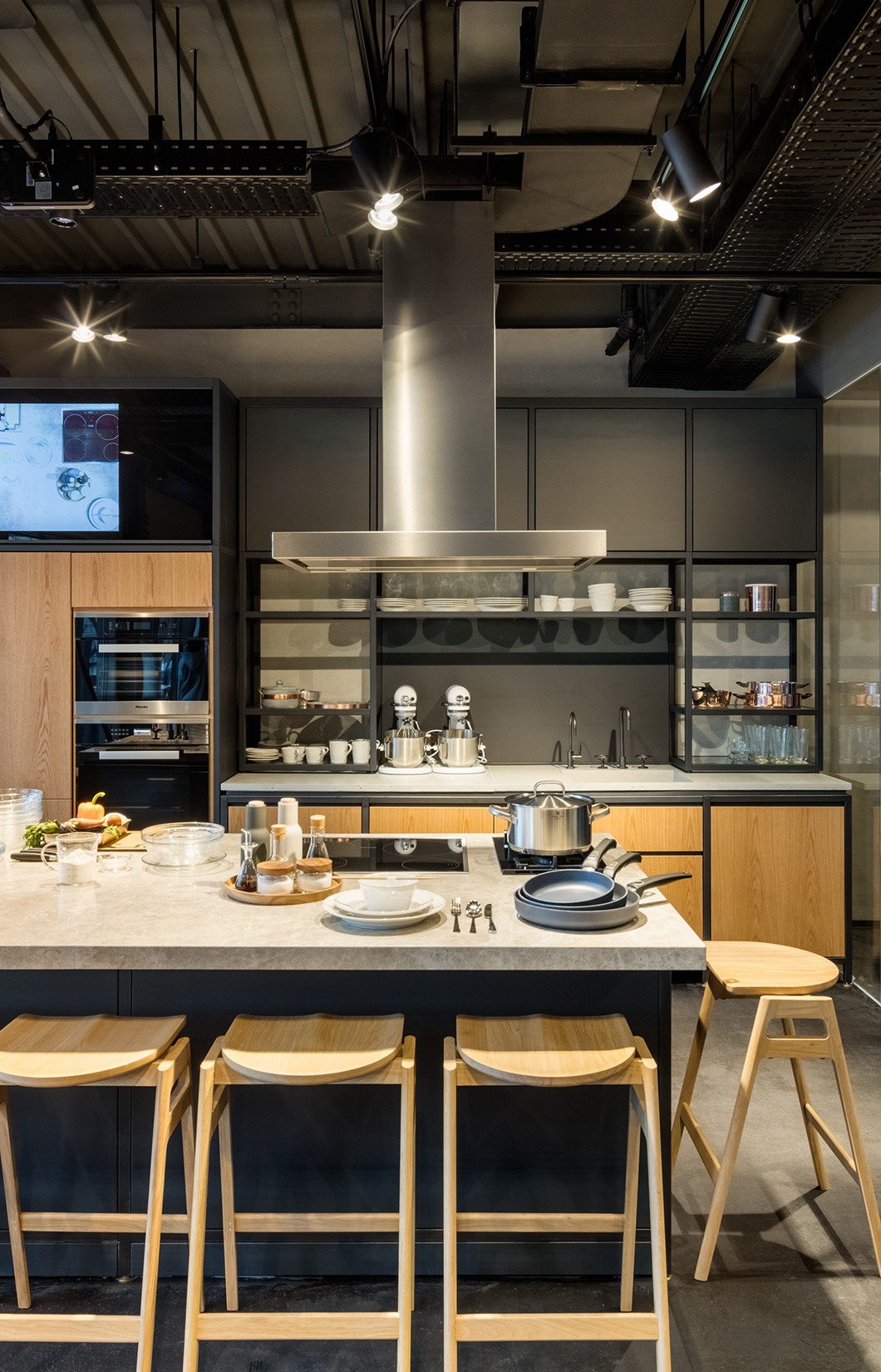 Rounding Off
Rounding Off
The Cooking Library is a space that is tremendously hard to pin down, tough to neatly compartmentalise. This is chiefly due to Blacksheep’s diligent attention to detail in the composition of its spaces, allowing the Hyundai Card Cooking Library to transcend singular discourses of it being immediately functional, or professional, or artistic. Simply put, it does all – and very well. One final example of this philosophy is Blacksheep’s incorporation of artwork, which runs through all of the Library’s spaces. All levels boast blackened steel sanitary war and specially commissioned artwork by British artist David Shirley, who Blacksheep were drawn to due to the tremendous wit, humour and wry invested into his work. Whilst adding to a somewhat human feel to the Library, it similarly drove home its focus on all things analogue, in this sense giving the pieces a more vibrant, philosophical role as opposed to merely art for art’s sake. Shirley created five works that interacted with the spaces that they are presently installed in; these include phallic bronze sculptures, set behind glazed walls in the basement toilets and others likewise work, set in other locations. Hyundai Card also feature a balcony art piece from Art Basel on the Library floor.
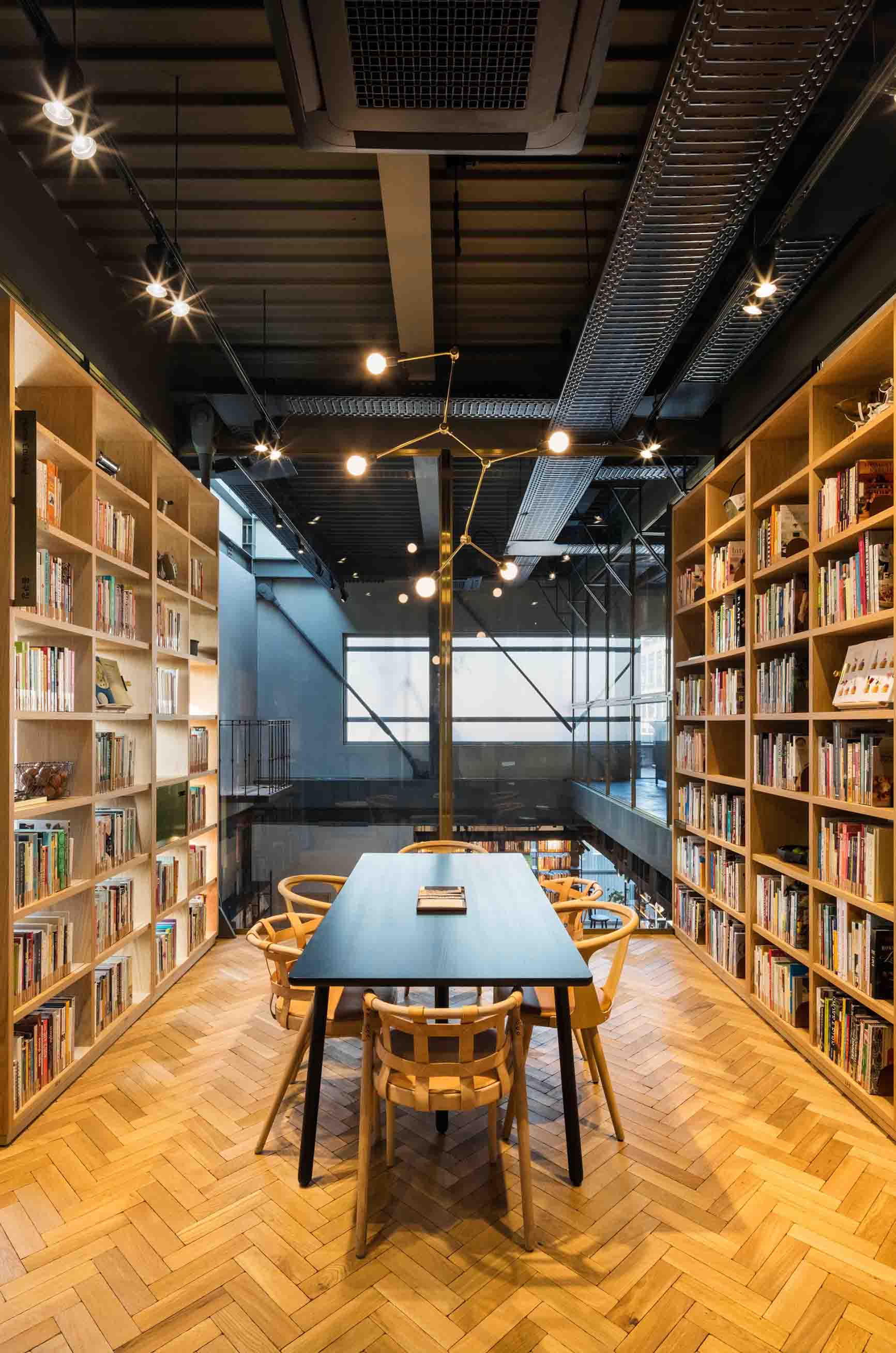 Brilliantly industrial from the get-go, Blacksheep’s vision for the Cooking Library evidences the countless visual possibilities that can be achieved with intelligent, composed design. Using the basic framework of minimalist-industrial stylings, each of the Library’s domains teases and pulls this foundational formula in a variety of different directions, infusing spaces with international flavours, historical tips of the hat, and, at times, a beautifully orchestrated collage of the two. Many chefs liken the art of cookery to that of dance, both disciplines predicated by conceptions of taste, balance and grace in execution. Blacksheep’s composition of the space in the Hyundai Card Cooking Library undoubtedly partakes in this rhetoric, figuring domains that are spunky, youthful-and all at the same time- elegant and wholly timeless.
Brilliantly industrial from the get-go, Blacksheep’s vision for the Cooking Library evidences the countless visual possibilities that can be achieved with intelligent, composed design. Using the basic framework of minimalist-industrial stylings, each of the Library’s domains teases and pulls this foundational formula in a variety of different directions, infusing spaces with international flavours, historical tips of the hat, and, at times, a beautifully orchestrated collage of the two. Many chefs liken the art of cookery to that of dance, both disciplines predicated by conceptions of taste, balance and grace in execution. Blacksheep’s composition of the space in the Hyundai Card Cooking Library undoubtedly partakes in this rhetoric, figuring domains that are spunky, youthful-and all at the same time- elegant and wholly timeless.
You May Also Like
- Mökki, Upscale living in Astana, Kazakhstan
- Hotel EMC2, where art meets science in Chicago
- El Pastór – Bringing an Authentic Mexican Aesthetic to Borough Market
All photos courtesy of Hyundai Card’s Cooking Library



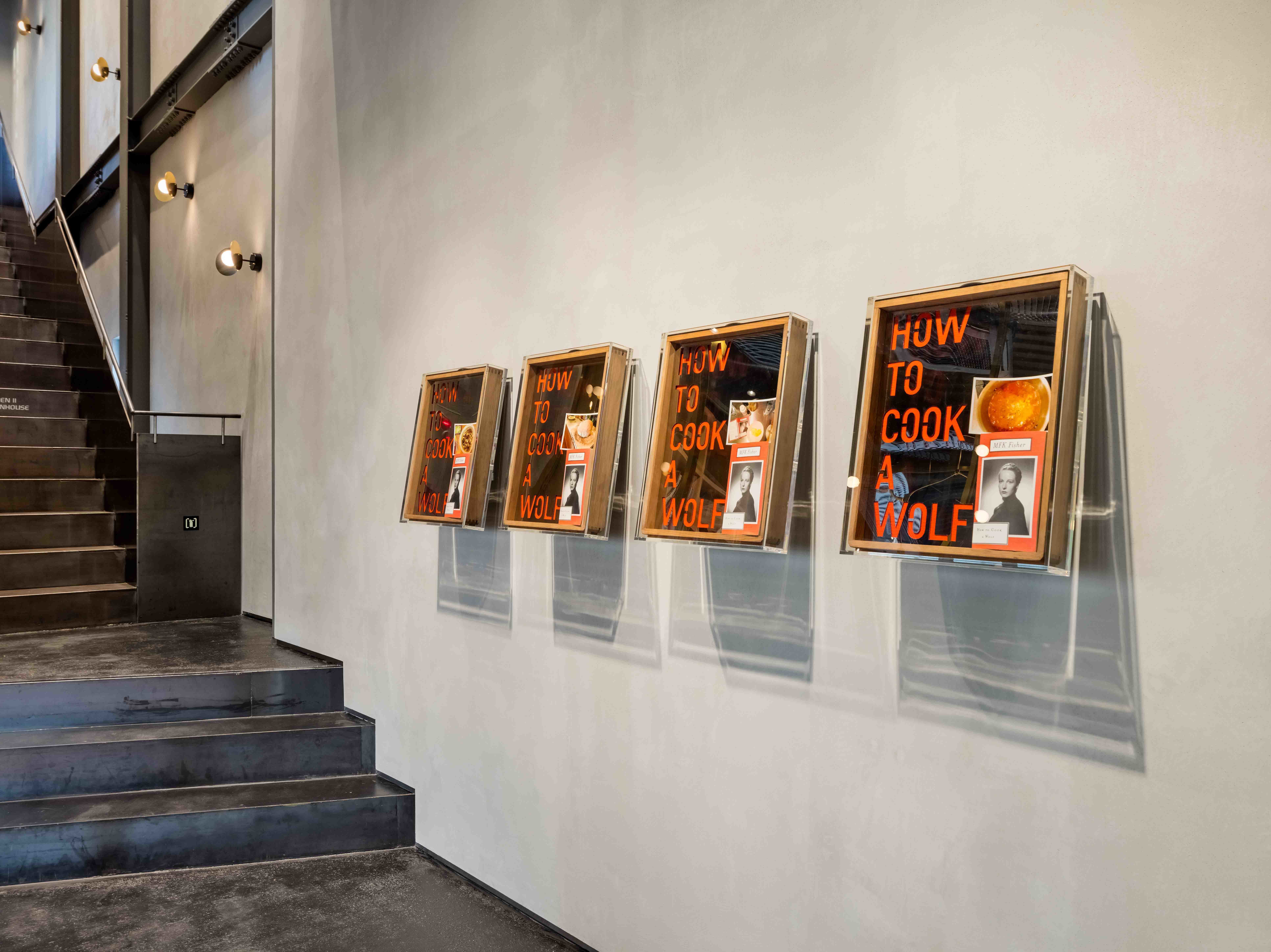
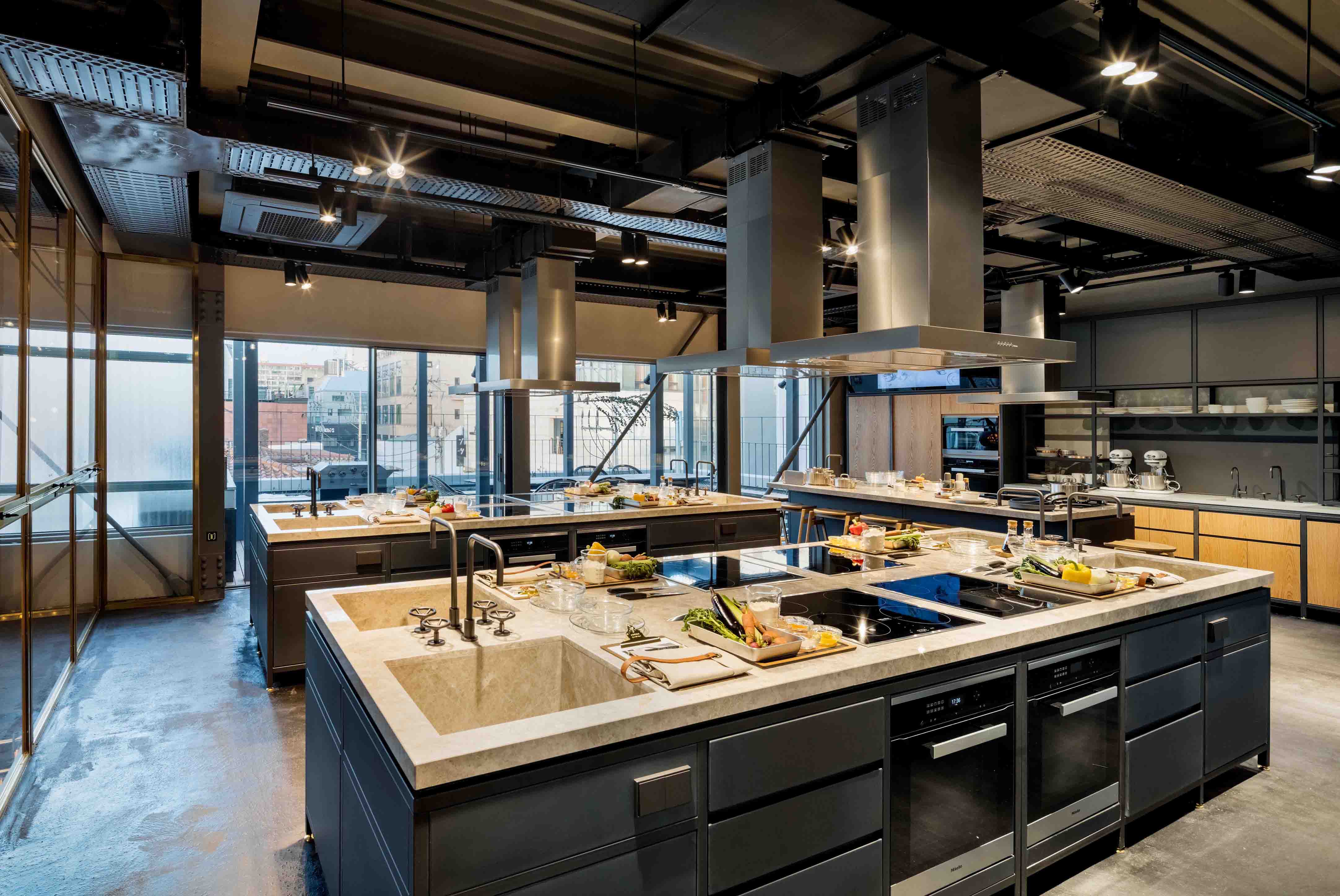






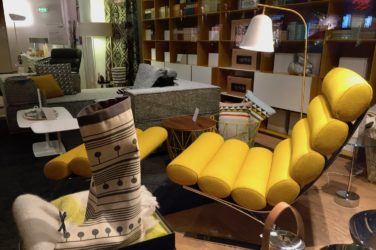


Show Comments